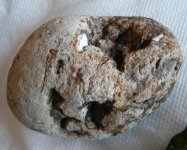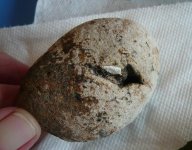BeachComber7
Sr. Member
- May 12, 2012
- 461
- 66
- Detector(s) used
- Bounty Hunter Pioneer and Tesoro deLeon
- Primary Interest:
- All Treasure Hunting
Any ideas?
Thanks,
Thanks,
Attachments
Last edited:
Upvote
0





